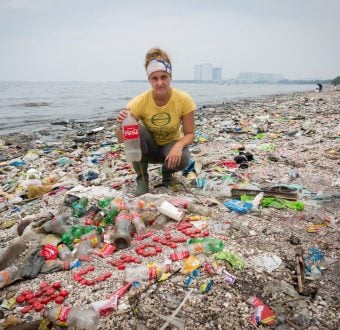The newly-added energy criteria (1) require companies to show their support for global mandatory cuts in greenhouse gas (GHG) emissions in the post-Kyoto political process. Companies also must commit to reductions in GHG emissions in their own operations. Most companies take a limited view of this by only focusing on the energy efficiency of their products (2) rather than including the production process. Greenpeace expects the industries, one of the most innovative and fastest growing sectors, to take leadership in tackling climate change by reducing both their direct and indirect carbon footprint.
“Electronics giants pay attention to environmental performance on certain issues while ignoring others that are just as important,” said Casey Harrell, Greenpeace International Toxics Campaigner. “Philips, for example, scores well on chemicals and energy criteria but earns a zero on e-waste since it has no global take-back policies. Philips would score higher if it took responsibility for its own branded e-waste and established equitable global take-back schemes.”
Many companies score well on energy efficiency as their products comply and exceed Energy Star standards (3). The best performers on energy efficiency are Sony Ericsson and Apple, with all of their models meeting, and many exceeding, Energy Star requirements. Sony Ericsson stands out as the first company to score almost top marks on all of the chemicals criteria (4). With all new Sony Ericsson models being PVC-free, the company also has met the new chemicals criterion in the ranking, having already banned antimony, beryllium and phthalates from models launched since January 2008.
“Greenpeace aims to show which companies are serious about becoming environmental leaders,” Harrell said. “We want them to race toward meeting the new criteria: phasing out other toxic chemicals, increasing the recycling rate of e-waste, using recycled materials in new products and reducing their impact on climate change.”
-End-
VVPR info: Daniel Kessler, Greenpeace Press Officer, mobile + 1 970 690 2728
Casey Harrell, Greenpeace International Toxics Campaigner in the US, mobile + 1 415 307 3382
Notes: Full report and details available at: https://www.greenpeace.org/usa/ewaste
(1) For full explanation of the new evaluation criteria, visit: www.greenpeace.org/electronics-ranking-criteria-explained.
(2) Fujitsu Siemens scores full marks on the requirement to support global mandatory cuts in greenhouse gas emissions. Nokia leads the pack on renewable energy, already deriving 25% of its total electricity needs from renewable sources with a target to increase this to 50% in 2010. Philips used some 10% renewable energy in 2007 and intends to increase this to 25% by 2012.
(3) Energy Star is a joint U.S. Environmental Protection Agency and U.S. Department of Energy program setting energy efficiency standards for electrical and electronics products; more information at: http://www.energystar.gov/index.cfm?fuseaction=find_a_product.
(4) Sony Ericsson stands out as the first company to score almost top marks on all the chemicals criteria, missing this target only by having unacceptably high threshold limits for brominated flame retardants (BFRs), meaning that many of its products are claimed to be BFR-free.

